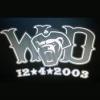-
Posts
1,507 -
Joined
-
Last visited
Content Type
Profiles
Forums
Articles
FAQ
Tests
Classifieds
Store
Group Buys
Everything posted by JMiller
-
Good luck to everyone this year, play well.
-
If you lie about your golfing ability or cheat at golf, it shows a lot about you as a person and your character flaws.
- Show previous comments 5 more
-

-

A 3-3 1/2 metting at the level that I participate in can be scripted and planned , as I'm dealing with Sr. level Executives, CEOs & Chairmen, however I have yet to meet someone in 30 years of business who could script the 4-5 hrs. on a golf course.
+1 on all of your comments though especially you 7:10am(04/11/13) comment.
My Best,
Richard
-

A 3-3 1/2 metting at the level that I participate in can be scripted and planned , as I'm dealing with Sr. level Executives, CEOs & Chairmen, however I have yet to meet someone in 30 years of business who could script the 4-5 hrs. on a golf course.
+1 on all of your comments though especially you 7:10am(04/11/13) comment.
My Best,
Richard
-
I'm so ready for the work day to be over so i can got out and play 9holes in the 60deg sunny day we have today.
-
I'm hitting the season running been 55 to 65deg here in NC las week or so, we are supposed to getup to 73deg on sat. Screw living up north the weather is way better in the south

-
I am not an English major, but I do find it funny that a professor of English at the college level had to add in "no text or social media text in your papers" other wise you fail the assignment. I thought the point of English classes were to learn proper grammar, spelling, structure. etc? Logic would say this is an unwritten rule about English classes in the first place. I guess social media and texting has ruined todays youth and ability to communicate

-
I had my first practice session on course since mid september of last year yesterday... Lets just say RUSTY is a great word for what happened

-
Well I see the light at the end of the tunnel in my full swing, finally. Just have to keep practicing and tweaking. The short game comming around as well it seems, putting is average. Hopefully I meet my season end goal of a solid 0 to 3 hanidcap and breaking 80 every round.







